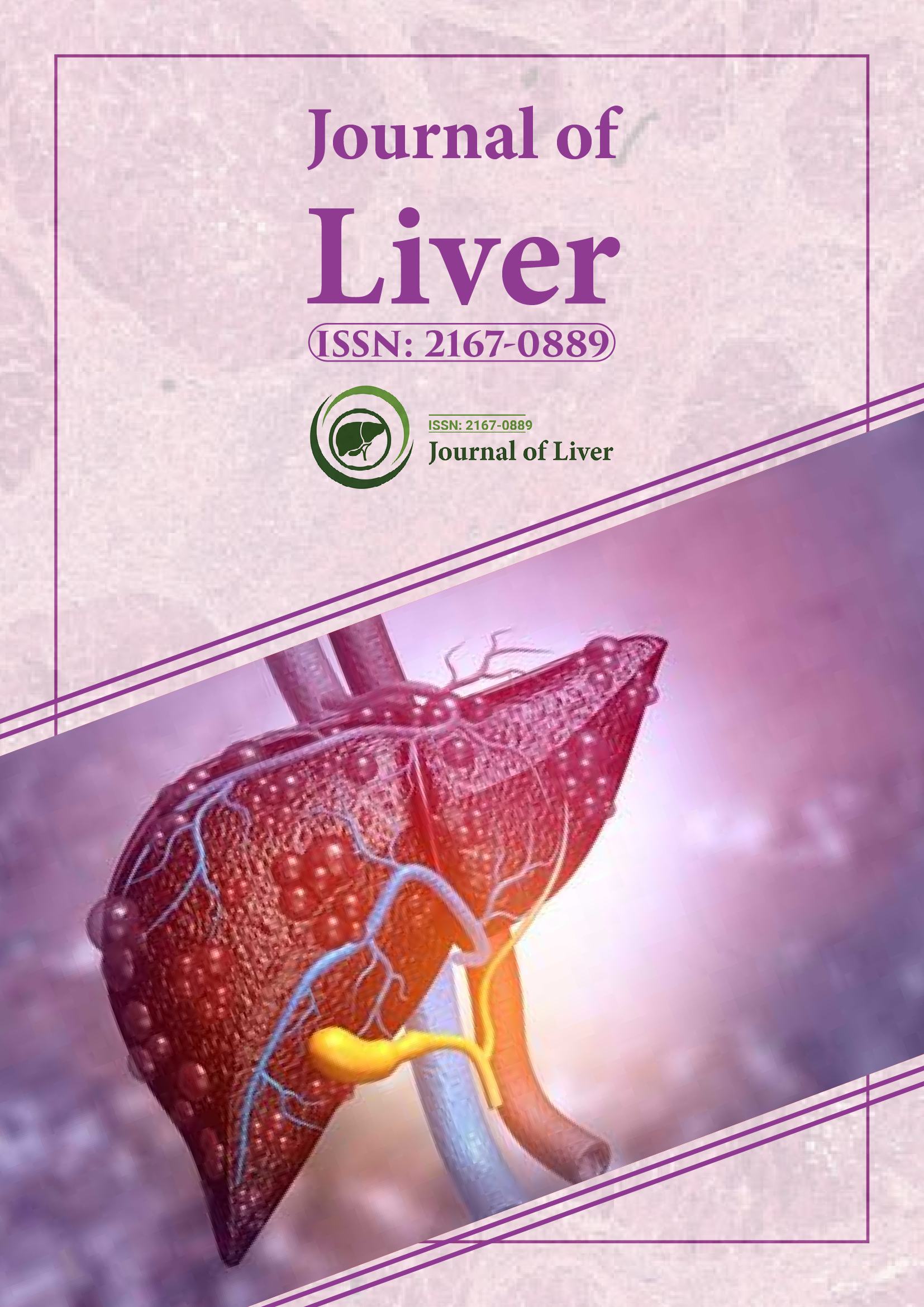Indexed In
- Open J Gate
- Genamics JournalSeek
- Academic Keys
- RefSeek
- Hamdard University
- EBSCO A-Z
- OCLC- WorldCat
- Publons
- Geneva Foundation for Medical Education and Research
- Google Scholar
Useful Links
Share This Page
Journal Flyer

Open Access Journals
- Agri and Aquaculture
- Biochemistry
- Bioinformatics & Systems Biology
- Business & Management
- Chemistry
- Clinical Sciences
- Engineering
- Food & Nutrition
- General Science
- Genetics & Molecular Biology
- Immunology & Microbiology
- Medical Sciences
- Neuroscience & Psychology
- Nursing & Health Care
- Pharmaceutical Sciences
Commentary - (2025) Volume 14, Issue 2
Imaging and Functional Evaluation of Liver Regeneration in Clinical Practice
Dalliah Randell*Received: 26-May-2025, Manuscript No. JLR-25-29522; Editor assigned: 28-May-2025, Pre QC No. JLR-25-29522 (PQ); Reviewed: 11-Jun-2025, QC No. JLR-25-29522; Revised: 18-Jun-2025, Manuscript No. JLR-25-29522 (R); Published: 25-Jun-2025, DOI: 10.35248/2167-0889.25.14.253
Abstract
Description
Hemi-hepatectomy is a widely performed surgical approach for the management of primary and secondary liver tumors, trauma and other localized hepatic conditions. The procedure involves resection of either the right or left hepatic lobe, followed by compensatory growth of the remaining liver tissue. Despite advances in surgical techniques, the evaluation of post-operative regeneration remains an essential component of patient management.
Regeneration after hepatectomy is a highly coordinated process, involving cellular proliferation, vascular remodeling and restoration of functional capacity. Monitoring this process is vital to ensure that patients recover adequate hepatic mass and physiological reserve to meet metabolic demands. Two key strategies have emerged as complementary in this evaluation — imaging-based volumetry, particularly Computed Tomography (CT), and biochemical assessment of liver function. While imaging provides information on the anatomic and volumetric recovery, functional assessment highlights the biochemical and synthetic capacity of the remnant liver. Integrating these two approaches can offer a comprehensive evaluation of regeneration dynamics and patient outcomes.
Computed tomography in liver regeneration
CT volumetry has become the standard imaging modality for evaluating liver size pre- and post-hepatectomy. Preoperatively, CT scans help estimate the Future Liver Remnant (FLR), which is a critical determinant of surgical feasibility. An insufficient FLR poses a risk of Post-Hepatectomy Liver Failure (PHLF). Postoperatively, serial CT examinations allow for quantification of liver volume gain over time. The typical regeneration pattern shows a rapid increase in volume within the first two weeks, followed by a slower growth phase that can continue for months. Studies have demonstrated that CT volumetry provides reproducible and accurate measurements, aiding in both clinical decision-making and research into liver regeneration kinetics.
Advanced CT techniques, such as contrast-enhanced imaging and perfusion CT, add further insight into vascular changes and parenchymal perfusion, which influence the regenerative process. However, volumetric recovery alone cannot fully predict functional recovery, necessitating complementary biochemical assessments.
Post-operative liver function
Liver Function Tests (LFTs) remain indispensable in the perioperative setting. Parameters such as serum bilirubin, Alanine Aminotransferase (ALT), Aspartate Aminotransferase (AST), albumin and prothrombin time provide essential information regarding hepatocellular integrity, synthetic capacity and excretory function.
After hemi-hepatectomy, patients commonly exhibit transient elevations in transaminases, reflecting hepatocellular stress and ischemia-reperfusion injury. Bilirubin levels and coagulation profiles are more directly correlated with hepatic functional reserve. Persistent elevation or deterioration of these markers may suggest impaired regeneration or evolving liver failure. Dynamic function tests such as Indocyanine Green (ICG) clearance, galactose elimination capacity, or breath tests can provide more precise quantification of functional recovery. These tests assess hepatic clearance or metabolic activity rather than static serum values, thereby offering valuable prognostic information.
Combining conventional biochemical tests with advanced functional assays improves sensitivity in detecting discrepancies between structural and functional regeneration.
CT volumetry and functional assessment
The integration of CT-based volumetry with biochemical or dynamic function tests is essential because volume and function may not correlate directly. For example, hypertrophy of the remnant liver may occur rapidly, but full recovery of metabolic and synthetic function may lag behind.
Several studies have demonstrated cases where adequate volumetric recovery did not translate into sufficient functional reserve, resulting in post-hepatectomy complications. Conversely, in some patients, relatively small increases in volume were accompanied by significant functional recovery, emphasizing the adaptive capacity of hepatocytes.
By combining imaging and functional assessments, clinicians can obtain a more reliable estimate of regeneration. For instance, a patient with significant volumetric gain on CT but persistently abnormal ICG clearance may require extended monitoring or supportive therapy before considering adjuvant treatments. This integrative approach enhances clinical safety and guides therapeutic decision-making.
Liver regeneration after hemi-hepatectomy is a dynamic process that requires comprehensive evaluation. CT volumetry offers accurate assessment of structural recovery, while biochemical and dynamic function tests provide critical insights into physiological performance. The integration of these modalities ensures a balanced evaluation, reducing the risk of underestimating or overestimating recovery.
For clinicians, the combined approach enhances preoperative planning, postoperative monitoring and long-term management. For researchers, it provides a framework to better understand the complex interplay between anatomy and function in hepatic regeneration. With ongoing advances in imaging and functional testing, the evaluation of liver regeneration is becoming increasingly precise, ultimately improving patient outcomes after hemi-hepatectomy.
Citation: Randell D (2025). Imaging and Functional Evaluation of Liver Regeneration in Clinical Practice. J Liver. 14:253.
Copyright: © 2025 Randell D. This is an open-access article distributed under the terms of the Creative Commons Attribution License, whichpermits unrestricted use, distribution, and reproduction in any medium, provided the original author and source are credited.
